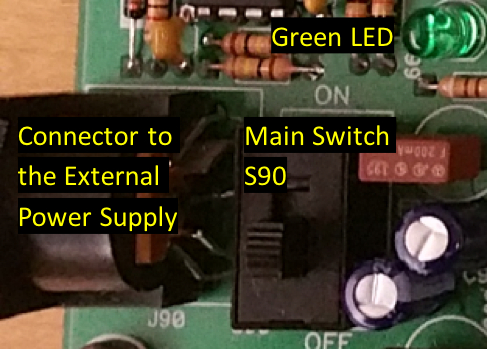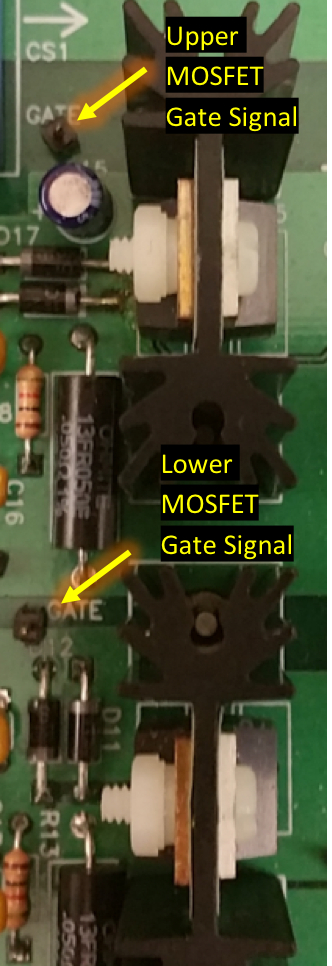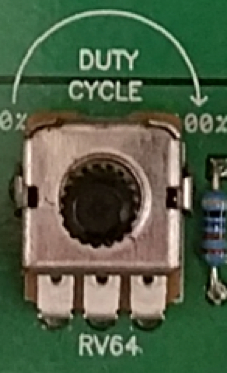Introduction to the Power Pole Board
Overview
Source: Ali Bazzi, Department of Electrical Engineering, University of Connecticut, Storrs, CT.
DC/DC converters are power electronic converters that convert DC voltages and currents from a certain level to another level. Typically, voltage conversion is the main purpose of DC/DC converters and three main types of conversion exist in a single converter: stepping up, stepping down, and stepping up or down. Among the most common step-up converters are boost converters (Refer to this collections video: DC/DC Boost Converter), while among the most-common step-down converters are buck converters. (Refer to this collections video: DC/DC Buck Converter.) Buck-boost converters are also common to perform both step-up and step-down functionalities, and flyback converters can be considered as special types of buck-boost converters where electrical isolation is achieved between the input and output ports. (Refer to this collections video: Flyback Converter.)
DC/DC converter topologies are numerous, and their control, modeling, and operational improvements (e.g. efficiency, reliability, performance, etc.) are areas of continuous interest. The HiRel Power Pole board presented in this experiment provides a very flexible tool to study and analyze the performance of boost, buck, and flyback converter, all on a single board.
The objective of this experiment is to introduce the major components and capabilities of the Power Pole Board from HiRel systems, which is the board being used in three experiments on DC/DC converters.
Procedure
This procedure mainly focuses on the ability of the Power Pole board to adjust switching pulses to the upper and lower MOSFETs
1. Setup
- Connect the external DC power supply to the Power Pole board.
- Turn on "S90."
- Observe that the green LED turns ON.
- Check the locations of "S90" and the green LED in Fig. 9.
- Place the second sliding switch in the blue switch array on "Int. PWM. Check the location of the sliding switch array
Results
A PWM pulse is expected to be seen on the oscilloscope screen. The duty cycle is a major control variable for DC/DC converter as it adjusts the period during which a MOSFET or any other semiconductor actively-controlled switch is on. All input-output voltage relationships of DC/DC converters rely on the value of this duty ratio, along with some other variable in some converter topologies.
The switching frequency is critical in c
Application and Summary
DC/DC converters are very common in DC power supplies used to charge electronics, and to supply power to many other electronic circuits. For example, any motor drive will require some smaller DC power supplies to power its low-power electronics, protection circuits, and high-power gate drives. Computer processors and other peripherals and accessories require very well-regulated DC voltages that are provided by DC power supplies. Renewable energy systems, e.g. solar photovoltaic panels, require DC/DC converters to regulat
Skip to...
Videos from this collection:

Now Playing
Introduction to the Power Pole Board
Electrical Engineering
12.4K Views

Electrical Safety Precautions and Basic Equipment
Electrical Engineering
144.7K Views

Characterization of Magnetic Components
Electrical Engineering
15.0K Views

DC/DC Boost Converter
Electrical Engineering
57.0K Views

DC/DC Buck Converter
Electrical Engineering
21.1K Views

Flyback Converter
Electrical Engineering
13.2K Views

Single Phase Transformers
Electrical Engineering
20.2K Views

Single Phase Rectifiers
Electrical Engineering
23.4K Views

Thyristor Rectifier
Electrical Engineering
17.5K Views

Single Phase Inverter
Electrical Engineering
17.9K Views

DC Motors
Electrical Engineering
23.4K Views

AC Induction Motor Characterization
Electrical Engineering
11.6K Views

VFD-fed AC Induction Machine
Electrical Engineering
6.9K Views

AC Synchronous Machine Synchronization
Electrical Engineering
21.6K Views

AC Synchronous Machine Characterization
Electrical Engineering
14.3K Views
Copyright © 2025 MyJoVE Corporation. All rights reserved




